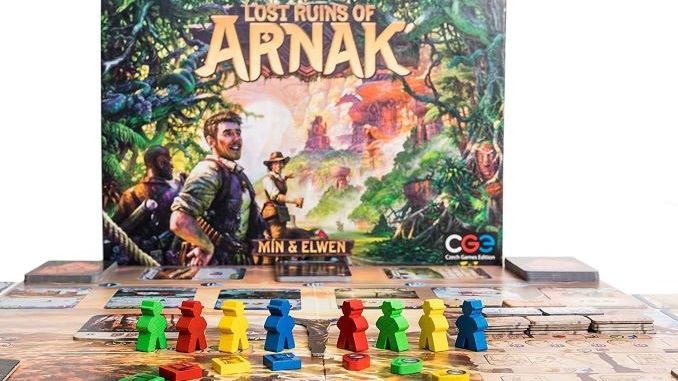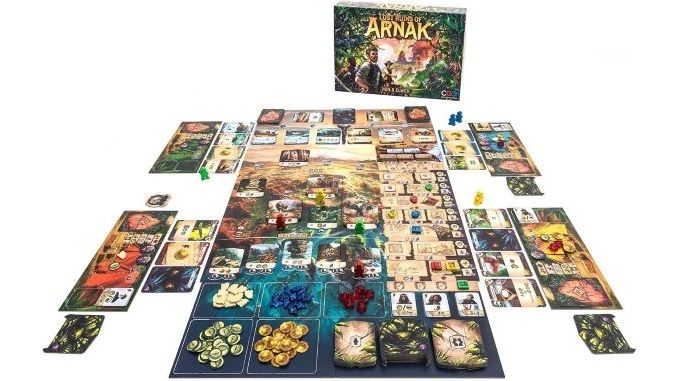Breakout Board Game Hit Lost Ruins of Arnak Earns the Hype

Lost Ruins of Arnak is a late 2020 release, a bit older than what I typically review here, but it’s become such a breakout hit—and a surprising one, given its size and the daunting setup—that it’s worth reaching back a little to give it a full breakdown. The game was one of the three finalists for the 2021 Kennerspiel des Jahres (experts’ game of the year), losing out to Paleo, but has raced into the top 40 on the tough-to-crack BoardGameGeek all-time rankings, and is the #2 “family” game behind only the runaway hit Wingspan. It has quite a bit in common with that last title, as it’s more complex than the typical family-level game—put a pin in that for the moment—but is much easier to play once you get through the first round and understand the basic mechanics, with a very satisfying set of rules that can make the game fun even for players who don’t end up winning.
Arnak is an adventuring game that brings in a bunch of familiar game mechanics, including worker placement, deckbuilding, hand management, and track advancement, without giving you too much of anything. (As far as I can tell, the game’s title isn’t a play on arnaque, the French word for a scam.) Each player has two explorers whom they’ll place on the board at various dig sites, exploring the lost ruins of the title and gaining resources. They also start with six-card decks with four basic action cards that either let the player take one specific resource or allow placement of an explorer, and two Fear cards that are worth -1 victory point but can be used for explorer placement at the bottom dig sites. Players can also move their two tokens up the research track for more rewards, buy item or artifact cards to beef up their decks, defeat Guardians who appear whenever a new site is excavated, and more.
The game takes place over five rounds, and within each round, players may continue taking actions as long as they’d like, until they run out of possible moves. This often means exhausting everything in their hand of five cards, placing both explorers, and spending most or all of the resources they’ve acquired to either buy cards or move up the research tracks. One of the particularly clever aspects of the game is how often players get “free” actions—ones that don’t count against the one-action-per-turn limit—as they progress through the rounds. In round one, you won’t have that many opportunities to take a free action, but by round five, your hand will probably grant you many free actions, as will the assistants and other tokens on your personal board.
-

-

-

-

-

-

-

-

-

-

-

-

-

-

-

-

-

-

-

-

-

-

-

-

-

-

-

-

-

-

-

-

-

-

-

-

-

-

-

-









































